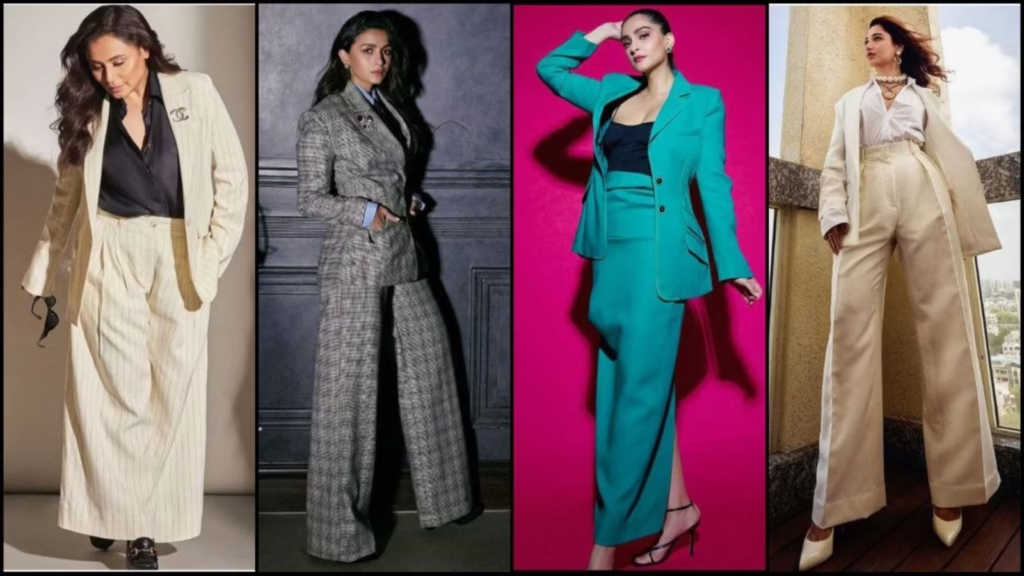Dressing well for work not only enhances your confidence but also helps create a professional and polished image. Whether you’re working in a corporate office, a creative environment, or remotely, choosing the right workwear can set the tone for success.
👔 1. Understanding Different Work Dress Codes
Before choosing work outfits, it’s essential to know your workplace’s dress code. Here are the most common categories:
A. Business Formal (Corporate & Executive Settings)
✔ Structured suits (blazers & tailored pants or skirts)
✔ Neutral or dark colors (black, navy, gray)
✔ Button-down blouses & silk tops
✔ Classic pumps or closed-toe heels
💡 Tip: Keep accessories minimal—pearls, stud earrings, and a structured handbag work best.
B. Business Casual (Modern Office & Professional Settings)
✔ Blouses with trousers or midi skirts
✔ Blazers over dresses or knit tops
✔ Loafers, ballet flats, or stylish block heels
✔ Subtle patterns and soft colors
💡 Tip: Mix tailored pieces with comfortable styles for a polished yet relaxed look.
C. Smart Casual (Creative & Flexible Workspaces)
✔ Chic blazers paired with jeans
✔ Jumpsuits or stylish knit dresses
✔ Statement accessories (scarves, belts, jewelry)
✔ Ankle boots or sleek sneakers
💡 Tip: Balance trendy pieces with structured basics to maintain professionalism.
D. Casual (Remote Work & Startups)
✔ Comfortable yet presentable loungewear
✔ Well-fitted jeans with a blouse or cardigan
✔ Soft knitwear & relaxed dresses
✔ Loafers, flats, or clean sneakers
💡 Tip: Choose neat and well-maintained casual outfits—avoid overly baggy or worn-out clothes.
👗 2. Workwear Essentials for Every Woman
Building a professional wardrobe starts with versatile, high-quality staples. Here are must-have pieces:
✔ Blazers – Instantly elevate any outfit. Opt for classic black, navy, or beige.
✔ Tailored Trousers – Wide-leg, slim-fit, or ankle-length styles work well.
✔ Button-Down Shirts – A mix of white, pastel, and striped shirts is essential.
✔ Pencil Skirts & Midi Dresses – Ideal for business formal or business casual settings.
✔ Comfortable Work Shoes – Loafers, kitten heels, and pointed-toe flats are stylish yet practical.
✔ Structured Handbag – A sleek tote or crossbody bag keeps your look professional.
🎨 3. Choosing Colors & Fabrics for Work
✔ Classic Neutrals – Black, white, gray, navy, and beige always look polished.
✔ Soft Pastels – Light blue, blush pink, and lavender add a feminine touch.
✔ Statement Colors – Burgundy, emerald green, or mustard can make your outfit stand out.
✔ Quality Fabrics – Cotton, wool, silk, and linen offer breathability and elegance.
💡 Tip: Stick to a mix of neutrals and statement shades for a refined look.
👜 4. How to Accessorize Workwear Elegantly
✔ Minimal Jewelry – Simple studs, delicate necklaces, and sleek bracelets work best.
✔ Belts – Define your waist with a stylish belt over dresses or trousers.
✔ Scarves – Silk scarves add sophistication to blouses and blazers.
✔ Totes & Satchels – Choose a structured bag that fits essentials like a laptop and notebook.
💡 Tip: Keep accessories understated but elegant for a professional touch.
🌟 5. Workwear Tips for Different Body Types
✔ Hourglass: Wrap dresses, fitted blazers, and belted trousers emphasize curves.
✔ Pear: A-line skirts, statement blouses, and structured blazers balance proportions.
✔ Apple: Flowy tops, empire-waist dresses, and high-waisted pants create definition.
✔ Rectangle: Peplum tops, wide-leg pants, and layering add shape.
✔ Inverted Triangle: A-line skirts, bootcut pants, and deep V-necks soften broad shoulders.
💡 Tip: Choose well-tailored pieces that enhance your body shape for a flattering fit.
🛒 6. Best Brands for Workwear Shopping
✔ Luxury & Designer Workwear – Hugo Boss, Theory, Ted Baker
✔ Affordable & Stylish Options – Banana Republic, Express, Mango
✔ Sustainable & Ethical Workwear – Everlane, Reformation, Eileen Fisher
✔ Size-Inclusive Brands – Eloquii, Universal Standard, Ann Taylor
💡 Tip: Invest in quality over quantity—well-made pieces last longer and look more refined.
✅ 7. Workwear Do’s & Don’ts
✔ Do: Keep your clothes well-ironed and polished.
✔ Do: Stick to a professional color palette.
✔ Do: Invest in a few high-quality basics you can mix and match.
✔ Don’t: Wear overly revealing, wrinkled, or distressed clothing.
✔ Don’t: Over-accessorize—keep it simple and elegant.
👩💼 Final Thoughts
Dressing for work is about finding the perfect balance between professionalism and personal style. Whether you’re in a formal office or a casual workspace, the right wardrobe can boost your confidence and make a lasting impression.

